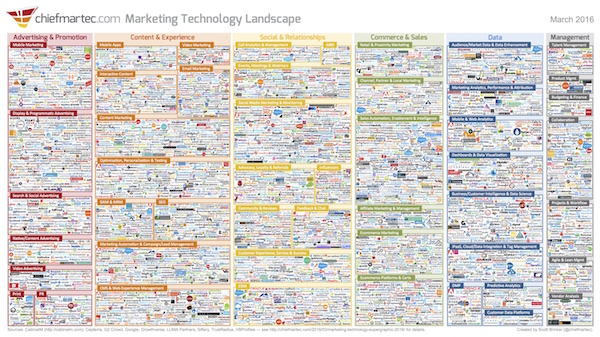I’m posting this from the 2016 MarTech USA conference in San Francisco — a fitting venue to release the 2016 marketing technology landscape supergraphic. (Finally!)
You can click on the image above for a larger version — which you’ll obviously need in order to be able to see anything more than a colorful blur. But if you really want to zoom in an explore the landscape, you should download one of the hi-res versions here:
2016 Marketing Technology Landscape Supergraphic (PDF)
2016 Marketing Technology Landscape Supergraphic (1,200dpi JPEG)
Three important notes before we dive into some discussion:
- I expressly grant permission to reproduce copies of this graphic in any media, digital or physical, as long as it is reproduced “as is” and in full. Feel free to share it in blog posts, presentation slide decks, reports, or any other vehicle where you would find it helpful.
- I must disclaim that this graphic is only my personal approximation of the marketing technology landscape and is surely rife with errors and omissions. It is intended only for discussion purposes. (Vendors: if I did not include you or you feel I miscategorized you, I apologize — please set the record straight in the comments thread below.)
- I want to acknowledge the key sources of data I used in my research to build this graphic: CabinetM (who was kind enough to give me a report of their whole database!), Capterra, G2 Crowd, Google, Growthverse, LUMA Partners, Siftery, TrustRadius, and VB Profiles. I used these services both to discover new marketing tech companies and to triangulate my categorization schema. As always, I owe a large debt of inspiration to Terry Kawaja, the godfather of vendor LUMAscapes.
Whew — 3,874 marketing technology solutions on a single slide
As mind-boggling as it is, the marketing technology landscape grew even bigger. I’ve fit 3,874 marketing technology solutions on to a single 16×9 slide — almost twice as many as last year.
I say “solution” instead of “company,” because some companies are included multiple times in different categories. The big enterprise software firms — Adobe, Google, IBM, Microsoft, Oracle, Salesforce, SAP — have the most instances of their logo on the page, but there are others too.
I loosened my restrictions on “one logo per page” a little bit to better reflect vendors who sell solutions in many categories across the landscape. But given space constraints, I was still pretty miserly about putting most companies in only one category — usually the one that seemed to be primarily represented on the home page of their website.
I estimate the de-duped count of logos is closer to 3,500 — approximately 87% growth over last year. That’s really amazing when you consider how large the landscape was last year already.
Here’s a recap of the evolution of this landscape:
You can view and read about the earlier versions of the marketing technology landscape here: August 2011, September 2012, January 2014, and January 2015.
Note that these are not stricly apples-to-apples comparisons. In each landscape edition, I have adjusted the categories — added some, removed some, redefined others — and varied my heuristics for inclusion. We’re living in a rapidly changing industry, and I treat this landscape as a living document that continues to evolve to the environment.
In particular, for the 2016 edition, I removed most of the “infrastructure” categories that were in the 2014 and 2015 editions — databases, cloud infrastructure, big data, web dev — because while they’re important to marketing, they’re more general purpose in nature. And I really needed the space. But I also added new categories.
Here’s the breakdown of the number of solutions in each category:
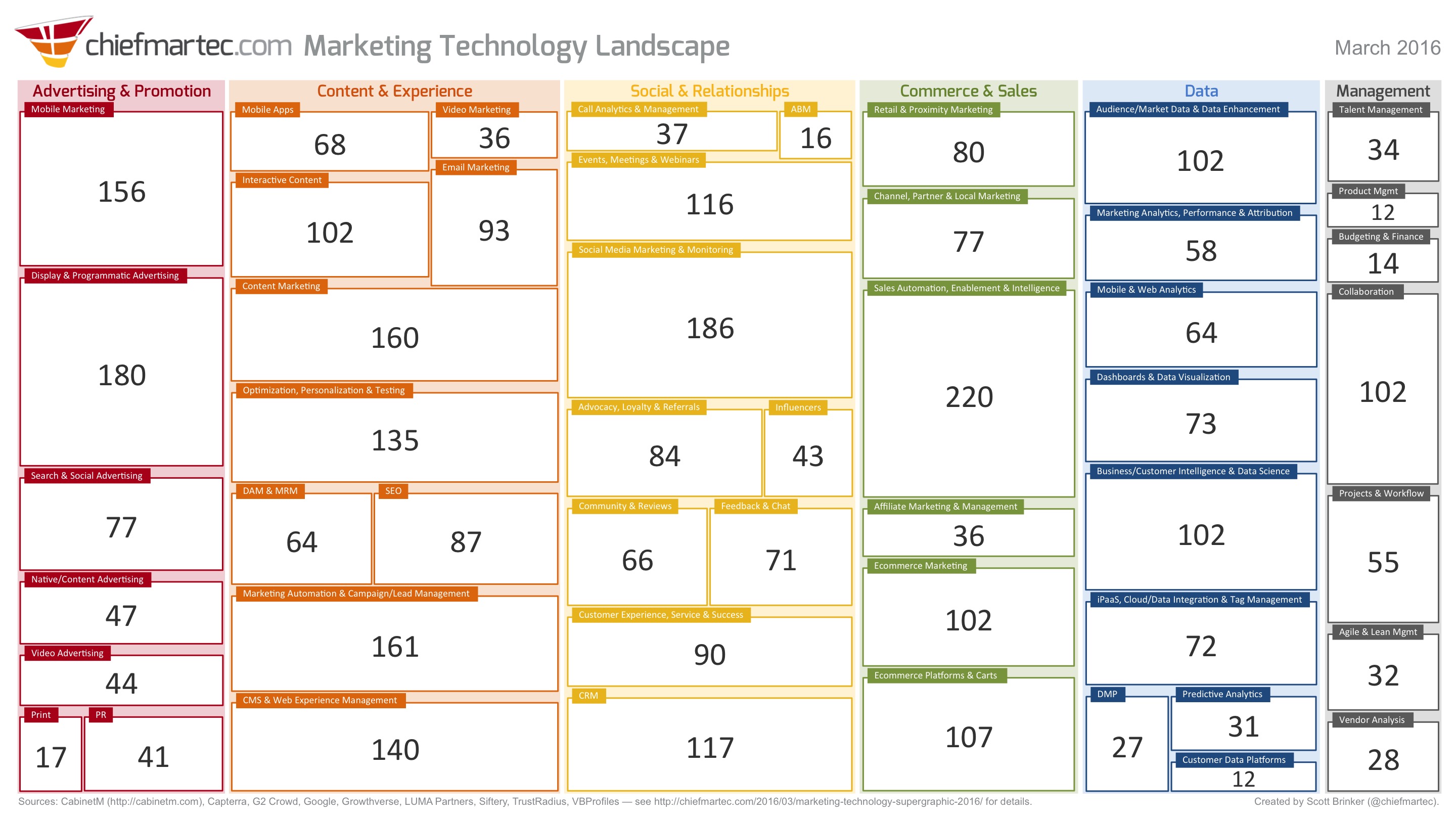
The top 5 largest categories, by number of solutions included, are:
- Sales Automation, Enablement & Intelligence (220)
- Social Media Marketing & Monitoring (186)
- Display & Programmatic Advertising (180)
- Marketing Automation & Campaign/Lead Management (161)
- Content Marketing (160)
I know, most of these categories are extremely broad. You could do an entire landscape solely on the subcategories within content marketing (and, indeed, people have). My goal with this landscape is to give you the 50,000-foot overview of the entire space — which forced a trade-off with granularity.
6 Marketing Technology Capability Clusters
This year I restructured the entire way the landscape is organized. The 2014 and 2015 editions were laid out with a kind of “stack” metaphor — infrastructure and platform systems at the bottom, experience and operations applications on top.
This represented my belief that marketing technology would logically coalesce around a single platform in any given organization — with a small oligopoly of platform providers competing for that starring role — which would then be augmented by a collection of more specialized applications that would plug into that platform as third-party solutions.
However, that “one platform to rule them all” model has not materialized in a lot of marketing departments. (Although smaller companies are more likely to have a single solution.)
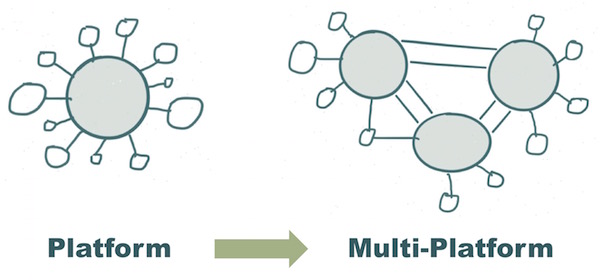
Instead, many companies have multiple platforms in their marketing technology stacks. It’s not unusual for them to have one vendor for their web experience platform, a different one for their marketing automation platform, another for the CRM, and so on.
This has become more viable for two reasons:
- Almost every vendor in the space has invested engineering resources in making it easy (or at least easier) to integrate with the rest of the marketing technology ecosystem. Most marketing tech products now come with plug-and-play support for the major CRM and marketing automation platforms.
- The category of products known as iPaaS (integration-platforms-as-a-service) — along with new generations of tag management and other “marketing middleware” solutions — has grown significantly, making it easier to connect most or all of an organization’s marketing technology to a common data exchange backbone.
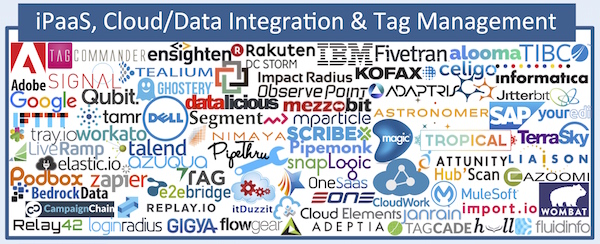
This has empowered marketers to select “best of breeds” solutions and avoid vendor lock-in with a single marketing technology provider — and, indeed, many are now successfully embracing that more open and heterogenous approach.
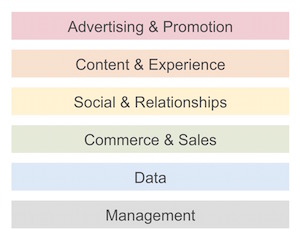
So I felt this year’s marketing tech landscape should reflect that shift. Instead of a platform-emphasized “stack” metaphor, I decided to organize the landscape around 6 marketing technology capability clusters:
- Advertising & Promotion
- Content & Experience
- Social & Relationships
- Commerce & Sales
- Data
- Management
With many of the marketing teams I’ve met with, these seem to be the clusters that most often divide key vendors in a multi-platform environment. It’s also where practice expertise — the skillsets of different marketers and marketing technologists — seems to vary the most from one cluster to the next.
A dynamic environment with few simple explanations
I’m sure many people will have opinions about this new landscape, and there will be a range of theories about its nature and its future.
I’ll follow up with more thoughts about this myself too, after reflecting on the feedback. But my current thinking about “the nature and future of martech” is mostly captured in these three posts I wrote last year:
But all theories, however — mine as much as anyone’s — I would just caution that this is a complex space. Visualize the interference pattern of many waves colliding together. There are many different forces acting on this space in parallel — accelerating digital disruption across the whole of humanity as the massive, overarching one. As a result, I believe it’s hard to fit everything into a single, simple explanation.
For instance, “consolidation,” while certainly true to some degree, is an oversimplification on its own. Some marketing technology vendors are exiting (“consolidation”), yet still other new ones continue to enter and innovate:
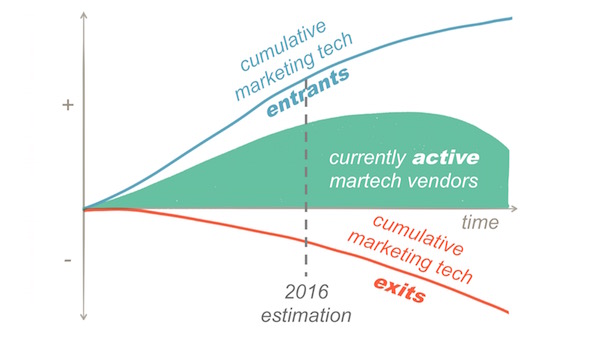
One thing is certain though: marketing technology is a fascinating space.
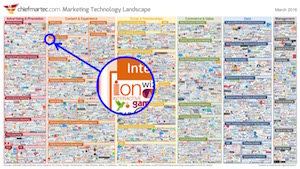
P.S. In addition to my role as editor of chiefmartec.com, I’m also the co-founder and CTO of a marketing software company myself — ion interactive, which makes an interactive content platform for marketers.
Naturally, my own company is included in this landscape graphic, but only once. You can find us in the upper right corner of the Interactive Content category box.
I’ve also included every competitor that I’ve ever heard about in that category box as well — 101 of them, by my count — in the interest of keeping this graphic as neutral and as unbiased as possible.

